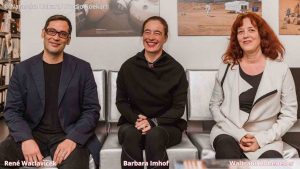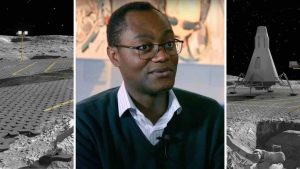
John C. Mather - kosmomagazine.it
We met John C. Mather, Nobel Prize in Physics in 2006, senior astrophysicist at the NASA’s Goddard Space Flight Center in Maryland (USA), and adjunct professor of Physics at the University of Maryland. In 2006, he received the Nobel Prize in Physics with George F. Smooth, for the discovery of the blackbody form and anisotropy of the cosmic microwave background radiation, thanks to the results obtained from NASA’s COBE project (Cosmic Background Explorer). Them work helped cement the big-bang theory of the Universe.
In October, 2012 the prestigious Time Magazine inserted him as one of the 25 most influential people in Space. Mather is also the senior project scientist for the James Webb Space Telescope.The James Webb Space Telescope of NASA, ESA and CSA, became to work in summer 2022 and it’s the biggest and the most powerful space telescope of the history: primary mirror consists of 18 hexagonal mirror segments made of gold-plated beryllium, which combined create a 6.5-meter-diameter (21 ft) mirror. It is deployed in a solar orbit near the Sun–Earth L2 Lagrange point, about 1.5 million kilometers (930,000 mi) from Earth.
In 2006 you and George F. Smoot received the Nobel Prize in Physics, for your work on the COBE project. Why did the discovery of the blackbody form and anisotropy of the cosmic microwave background radiation help cement the Big Bang theory of the Universe?
The “big bang” name is a bit misleading; we should call it the expanding universe theory. We showed that the spectrum of the CMBR matches exactly with the predictions of a universe expanding from a very hot and dense earlier state. The spectrum shows how bright the radiation is at each different wavelength. Other explanations for the CMBR all failed to predict this spectrum. One popular alternative was the “Steady State Theory” that claimed that the age of the universe is infinite and that the CMBR is produced by dust grains heated by starlight. The second major discovery of the COBE team was that there are hot and cold spots in the map of the CMBR, also known as “anisotropy” from the Greek words meaning “not the same in every direction”. These hot and cold spots correspond to density variations in the early universe, which are just enough to explain the formation of galaxies, stars, and eventually planets and people. Some regions of space had just enough extra mass density for gravity to pull back against the expansion and make the material collapse into galaxies.
Credit: NEAF Talks
Today, in 2023, is there any news on the studies of the Big Bang theory? Some scientists say the universe may not have been born from the Big Bang. In your opinion, is the Big Bang theory still valid?
Yes the “big bang theory” is still valid in the generic meaning of “expanding universe”. There are of course many discussions of the details of the early universe, and what moment is described as the “big bang”. One very attractive theoretical explanation is called “cosmic inflation” and it is very successful. It explains why the whole universe appears to be very uniform and to be filled with density variations of just the right type. So far it has passed all tests. But there are many versions and astronomers are still discussing which are best.
You are also the senior project scientist for the James Webb Space Telescope. Can the James Webb Telescope help Cosmology? What can it tell us about the origin of the Universe?
The JWST does not look as far back in time as the COBE and other equipment observing the CMBR. But it can test how the galaxies and black holes grew from the primordial material, and whether our current understanding of cosmic dark matter and dark energy are correct. The “origin of the universe” is really only a question of how far back we can see and imagine in time. We cannot imagine a time before time or a universe outside space. But the very meaning of time and space are serious topics for modern physics.

Credits: NASA/Taylor Mickal
Can the Universe provide us with the meaning of life? Can it help us to feel humbler and smaller?
The “meaning of life” is really about how we humans think and feel. The universe invites us to recognize that we are tiny specks on a tiny planet around an ordinary star, that our lives are short, and that we return to dust at the end, as do all living things. We are also invited to consider the mystery of abstract existence of ideas, thoughts, feelings, awareness, intention, stories, knowledge, mathematics, and so forth that persist in non-physical form, outside our bodies. It would be presumptuous for us to claim that humans are the only beings who are considering these questions, given the immensity of the universe and the possibility of life elsewhere. But here we are doing it. For me, every day of life is a gift.



